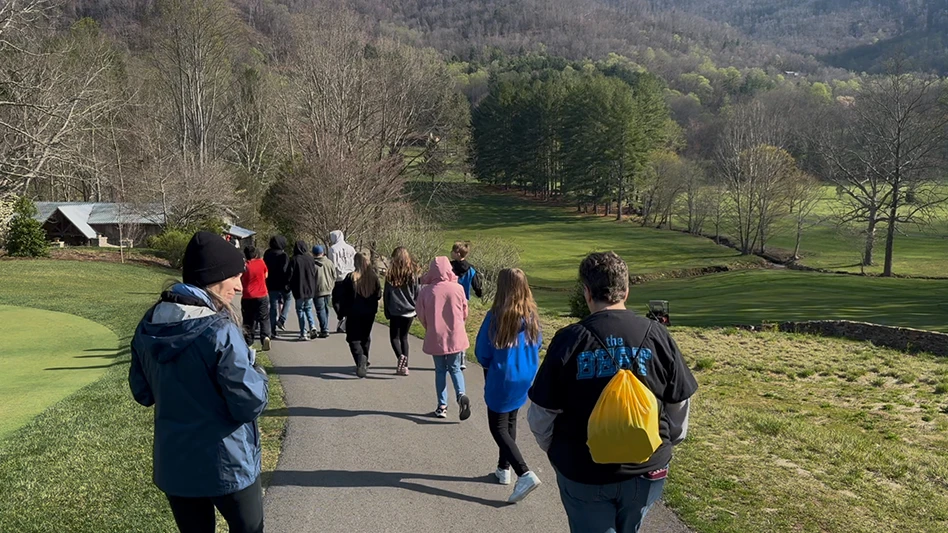What will you do differently next year? What will you be doing in 10 or 20 years? What will you be able to do in retirement?
I’ve worked closely with golf course superintendents for almost 20 years, and during that time, I’ve gained great respect for what you do and how you do it. I’ve also learned there are some unique opportunities and threats for you.
One opportunity is the myriad educational materials and seminars offered by the GCSAA, universities, state and regional member organizations, and the many companies selling products and services. These opportunities are unparalleled in other industries, so you should be proud of your market.
These opportunities are also a threat – that you won’t use them effectively, and thus, find yourself unprepared for the next 10 to 20 years or even for retirement. The threat is real. I’ve talked to many superintendents who seek advancement or a career change but don’t have the necessary knowledge, skills and experiences to move into upper-level management or other rewarding positions.
Other unique aspects of a superintendent’s position make this threat more real. First, many superintendents don’t have a supervisor or mentor to guide them with their career development because many clubs don’t have a traditional organizational structure. Second, there are many superintendents who don’t have an obvious next step in their career, which also is influenced by the lack of structure at a club.
I hope you’re asking, “What does this mean for me?” It means you must be thoughtful and proactive about your educational choices. If you’re like most superintendents, when you get the course roster for the GCSAA conference at the Golf Industry Show or a regional event, you look at the offerings and select a few to attend. Although these selections will be beneficial, they’ll likely focus primarily or exclusively on your short-term needs, and the lost opportunity will contribute to the aforementioned threat.
You’re in charge of your professional development. As a correlation, you’d never think of applying fertilizer or pesticides without a plan. Similarly, you should never decide what offerings to take based only on what you see today. The offering selection should be based on a carefully thought out, professional development plan.
A superintendent in one of my seminars told me he takes two seminars each year at the Golf Industry Show – one for his course and one for himself. The seminar for the course focused on what he’ll do differently next year. The seminar for him focused on what he’ll be doing during the next 10 to 20 years and, perhaps, in retirement. He had a plan. Below is a three-step process for you to develop a plan.
Step 1
Think about and visit with family, mentors, friends and acquaintances in other roles and even industries to discuss what you want to do and accomplish with the remainder of your career. Consider these questions:
- Do I want to continue in my current or similar position until I retire?
- Am I driven to strive to be a superintendent at a prestigious course?
- Do I want to advance to a position such as director of golf covering multiple courses or leading all of the services of a facility?
- Am I interested in a different position within the golf business, such as a position in the many companies that provide goods and services to superintendents and golf courses?
- Am I interested in a career change to another industry or occupation?
Outline or write your observations and conclusions.
Step 2
Determine the knowledge, skills and experiences you’ll need to excel in what you seek to accomplish during the rest of you career. This won’t be easy and will require research and conversations with people in positions you seek. Be proactive and talk to individuals in these positions. You’ll be surprised how willing people are to talk to you.
Step 3
You’re now ready to lay out your professional development plan. The following should help:
1. Focus on topics beyond the normal turf management courses – leadership, sales training, supervision, strategic planning, team building, interpersonal skills, customer orientation and marketing.
2. Move outside your comfort zone. Your training could move outside offerings specifically for superintendents. Look to local chambers of commerce, colleges or universities, or executive educational programs.
3. Don’t restrict yourself to traditional courses and seminars. The Internet offers almost unlimited opportunities for learning.
Armed with your professional improvement plan, your seminar selections for the GCSAA conference at the Golf Industry Show and other educational events will be thoughtful, proactive and planned. GCI
Robert A. Milligan, Ph.D., is professor emeritus from Cornell University and senior consultant with Madison, Wis.-based Dairy Strategies. He can be reached at 651-647-0495 or rmilligan@trsmith.com.

Explore the September 2007 Issue
Check out more from this issue and find your next story to read.
Latest from Golf Course Industry
- The Aquatrols Company hires marketing manager
- Renovating Bredemus in West Texas
- Renovation starts at Okatie Creek GC at Sun City Hilton Head
- The Fittest Podcast in Turf: Episode 1
- New 6-hole course debuts in Oklahoma
- GCSAA announces Grassroots Ambassador Leadership Award recipients
- Reel Turf Techs: David Gummo
- PBI-Gordon promotes two to executive level






